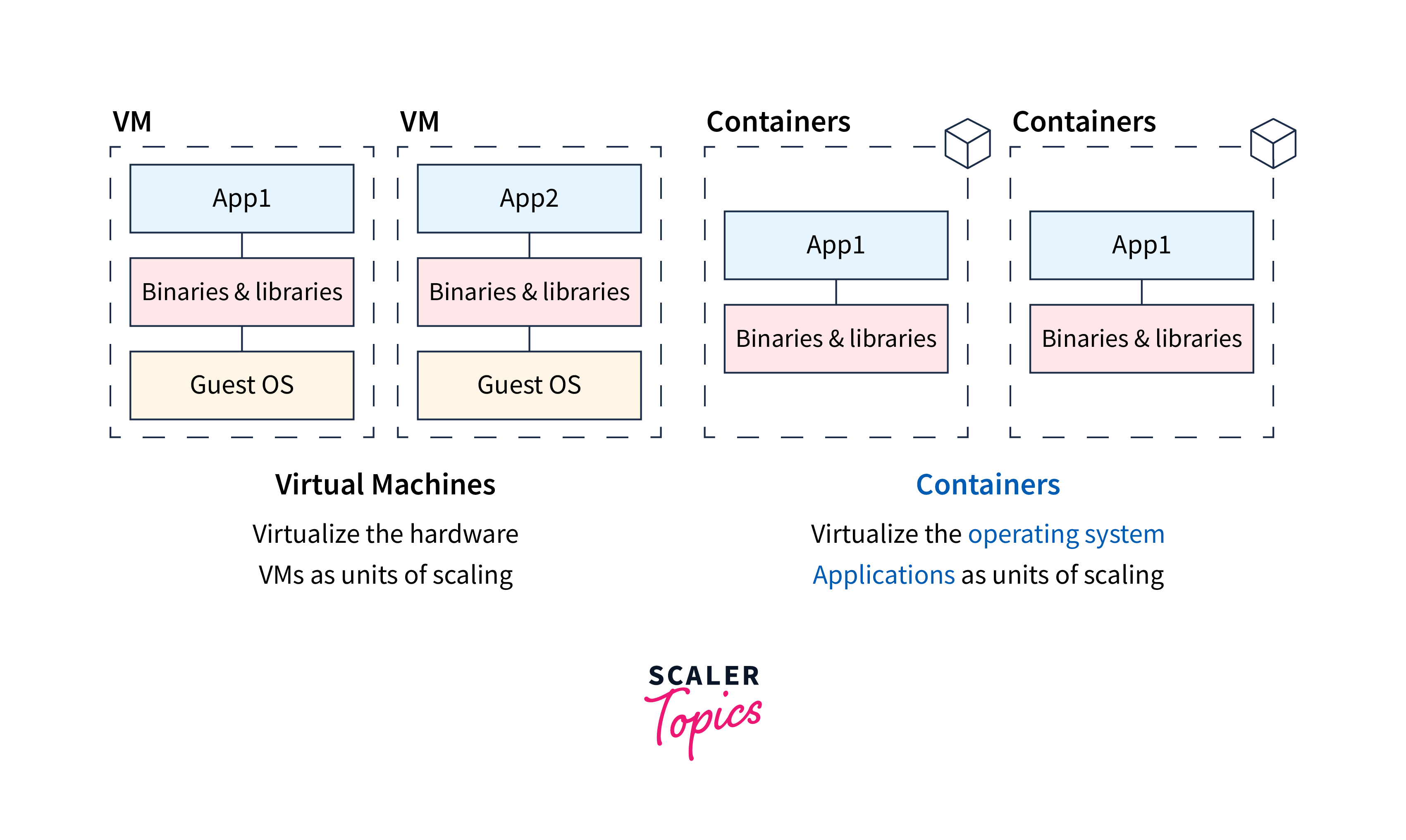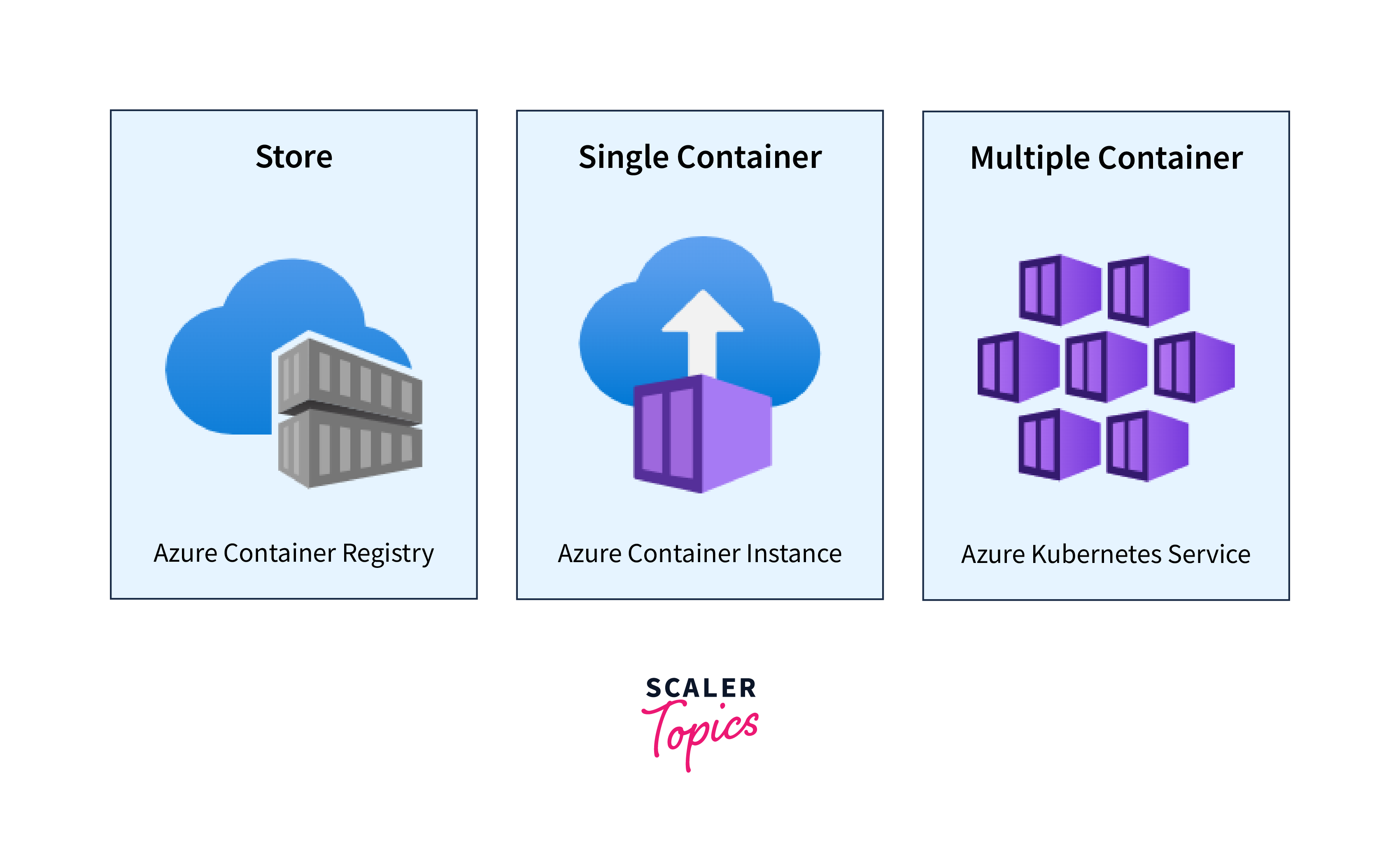Container in Azure
Introduction
Azure is a cloud computing service offered by Microsoft that is widely used by developers and organizations worldwide. One of the most popular features of Azure is the Azure Container Service, a container management solution that supports popular container tools and technologies.
To understand the concept of container in a more meaningful manner imagine that you are in the process of moving houses. It can be a physically and mentally exhausting task as you need to organize and move all your belongings from one location to another. To facilitate this process, you have to carefully pack all your items into boxes. Typically, items from the same room are packed together, such as placing dinnerware, utensils, and pots in a dedicated "kitchen" box. This way, everything you would require for your kitchen is conveniently contained in one package.

Similarly, in software development, containers operate in a similar manner. They are software packages that encompass an application's code along with all the necessary files, libraries, and dependencies it requires to function seamlessly.
Getting Started with Azure Containers
Azure provides support for popular containerization tools like Docker and Kubernetes, making it effortless for developers to package, distribute, deploy, and scale applications along with their dependencies in a lightweight and efficient manner.
- Azure Container Instances (ACI): ACI is a serverless container service that allows you to run containers without managing the underlying infrastructure. It's an excellent option for quick deployment and testing.
- Azure Container Registry (ACR): ACR is a private registry for storing and managing container images. It integrates seamlessly with other Azure services, ensuring secure and fast container image deployment.
- Azure Kubernetes Service (AKS): For more complex and orchestrated container deployments, AKS provides a managed Kubernetes service. Azure Kubernetes Service simplifies the process of managing, scaling, and deploying containerized applications.

There are multiple ways to create and manage Azure Container Instances (ACI) containers:
- Azure Portal: The Azure portal offers a graphical user interface for creating and managing ACI containers. Simply click on the "Create a resource" button, search for "Container Instance", and follow the prompts to provide the necessary container details, such as image, CPU cores, memory, environment variables, and secrets.
- Azure CLI: The Azure command-line interface (CLI) allows you to create and manage ACI containers through the command line. The Azure CLI is compatible with Windows, Linux, and macOS, offering a wide range of Azure capabilities.
- Azure Resource Manager Templates: Azure Resource Manager templates enable you to create and manage ACI containers as part of a larger Azure deployment. These JSON files define the resources and configurations for your Azure environment, providing a structured approach to managing ACI containers.
Deploying Your First Application
Once you have set up your Azure container environment, deploying your first application is a simple process. Here are the steps involved:
-
Container Image Creation: Use Docker to create a container image of your application. This image contains all the necessary dependencies and configurations for your application to run.
-
Push to Azure Container Registry: Push the container image to your Azure Container Registry (ACR). ACR is a private repository where you can store and manage your container images. By pushing the image to ACR, it becomes accessible to your Azure environment.
-
Define Deployment Configuration: To deploy your application, you can utilize Azure services like Azure Kubernetes Service (AKS). With AKS, you can define how your application should be deployed, specifying factors such as the desired number of replicas, resource requirements (CPU, memory), and network configurations.
-
Deployment and Scaling: Once you have defined the deployment configuration, you can deploy your application. Azure will take care of the scaling based on your defined parameters. If there is more demand, Azure will automatically scale the application by adding more instances to handle the increased load.
By following these steps, you can easily deploy and scale your application in your Azure container environment.
Best Practices for Azure Container Security
Ensuring the security of containerized applications in Azure is paramount. To enhance container security, it is crucial to follow these best practices:
-
Regular Image Scanning: It is important to regularly scan container images for vulnerabilities. You can leverage Azure Security Center or use third-party tools specifically designed for container image scanning. These scanning tools analyze container images for known vulnerabilities and provide insights and recommendations for remediation.
-
Network Security Policies: Implementing network security policies helps control the traffic between containers and external services. By defining rules and access controls, you can restrict communication to only necessary and authorized sources. Consider using Azure Network Security Groups (NSGs) or container-native networking solutions like Azure Kubernetes Service Network Policies to enforce network security.
-
Role-Based Access Control (RBAC): Utilize Role-Based Access Control (RBAC) to restrict access to container resources, ensuring the principle of least privilege. Assign appropriate RBAC roles to individuals or groups, granting only the necessary permissions required for their respective roles. This helps prevent unauthorized access and potential security breaches.
-
Update and Patching: Regularly update container images and the underlying host systems with the latest security patches. Keeping software components and dependencies up-to-date will help mitigate vulnerabilities and ensure that known security issues are addressed promptly.
-
Secrets Management: Avoid hard-coding sensitive information like passwords or API keys within container images. Instead, use Azure Key Vault or other secure secrets management solutions to store and retrieve sensitive information securely at runtime. This reduces the risk of exposing such sensitive data.
-
Monitoring and Logging: Implement robust monitoring and logging practices to detect and respond to any security incidents or anomalies. Utilize Azure Monitor and Azure Security Center to gain visibility into container activities, monitor for suspicious behavior, and receive alerts for potential security threats.
By following these steps, you can enhance the security of your containerized applications in Azure and mitigate potential risks.
Monitoring and Optimization
Once your Azure Containers are deployed, it is important to monitor their performance and optimize their resources as necessary. Azure provides several monitoring and optimization tools, such as:
- Azure Monitor: Utilize Azure Monitor to collect and analyze telemetry data, gaining insights into container performance, application health, and resource utilization.
- Auto-scaling: Implement auto-scaling based on metrics such as CPU utilization or memory usage to ensure optimal resource allocation.
- Cost Management: Leverage Azure Cost Management tools to monitor and manage the costs associated with your containerized workloads.
These tools can help you identify performance issues, detect and prevent bottlenecks, and optimize your container resource utilization.
Conclusion
- Azure Containers offer a powerful and flexible way to manage and deploy container applications in the cloud.
- Containers changed the way applications are developed, scaled, and deployed.
- Azure provides support for popular containerization tools like Docker and Kubernetes, making it effortless for developers to package, distribute, deploy, and scale applications.
- There are three ways to create and manage Azure Container Instances (ACI) containers: Azure Portal, Azure CLI, and Azure Resource Manager Templates.
